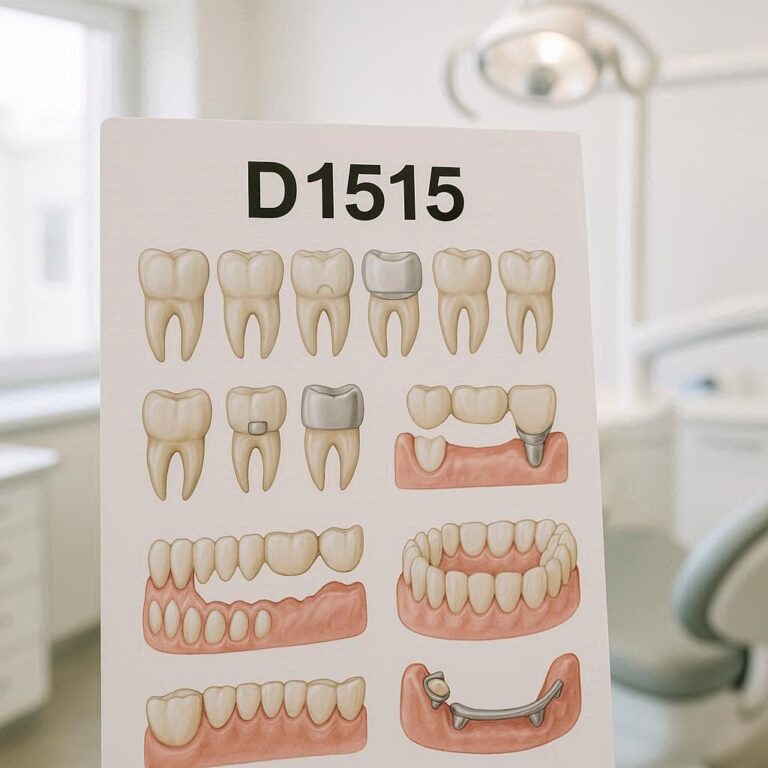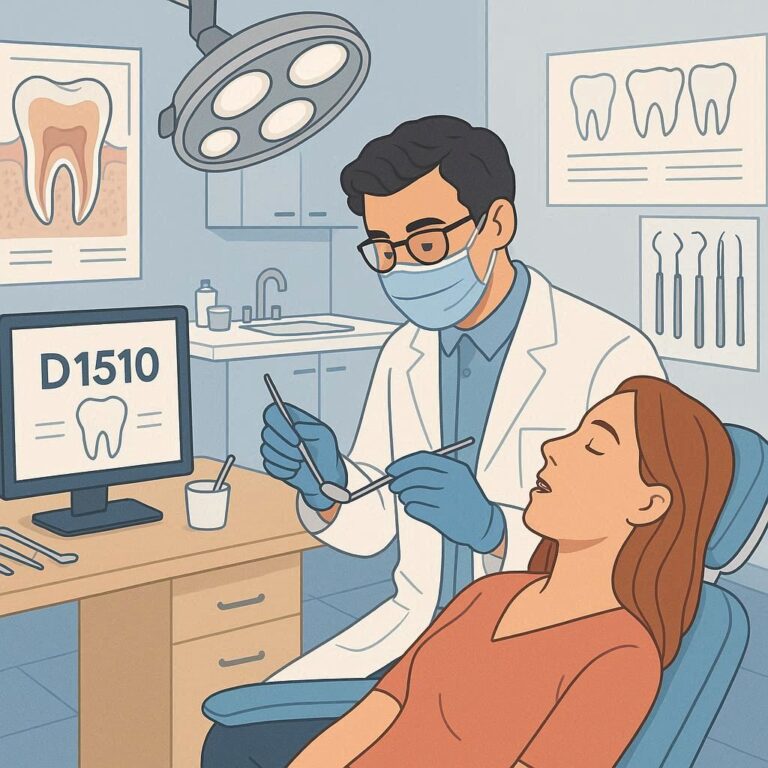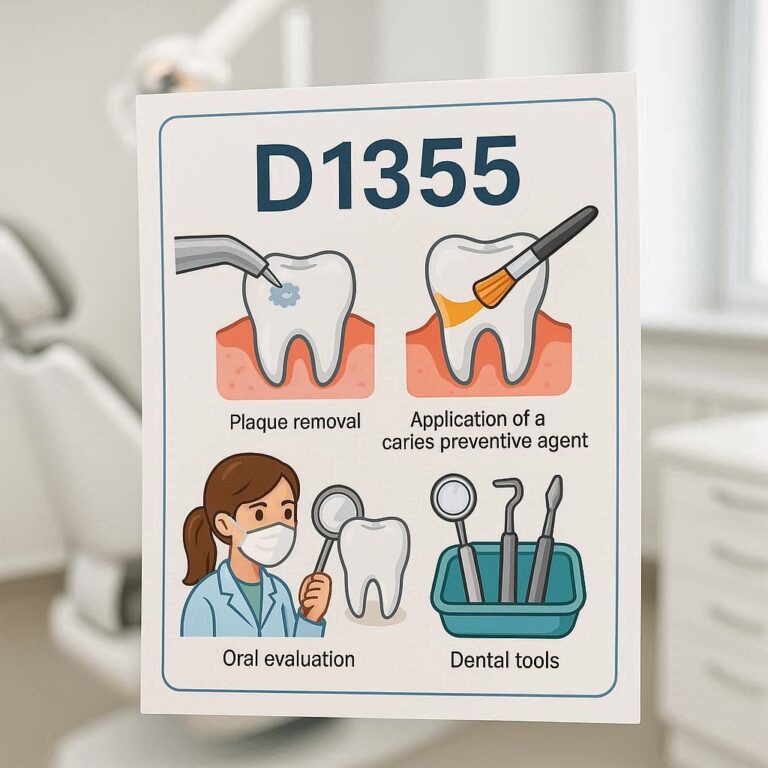Dental Code for Scaling One Tooth
Dental scaling is a fundamental procedure in periodontal therapy, crucial for removing plaque, tartar, and bacterial deposits from teeth. While full-mouth scaling (D1110 or D4341) is common, there are instances where scaling a single tooth (D4346) is necessary. Understanding the correct dental code for scaling one tooth ensures accurate billing, insurance compliance, and optimal patient care.
This comprehensive guide explores the dental code for scaling one tooth, its clinical indications, insurance implications, and best practices for dental professionals.

2. Understanding Dental Scaling
Dental scaling is a non-surgical procedure performed to treat gingivitis and periodontitis. It involves removing calculus (tartar) and plaque from tooth surfaces, particularly below the gumline.
Types of Scaling Procedures
-
Prophylaxis (D1110): Preventive cleaning for healthy gums.
-
Scaling and Root Planing (D4341/D4342): Deep cleaning for periodontal disease.
-
Single-Tooth Scaling (D4346): Targeted cleaning for isolated periodontal involvement.
3. When Is Single-Tooth Scaling Necessary?
Single-tooth scaling (D4346) is used when:
-
Only one tooth has localized periodontal involvement.
-
Trauma or infection affects a single tooth.
-
A patient has a history of periodontal disease but only one tooth currently requires intervention.
Clinical Indicators for D4346
-
Pocket depth ≥4mm around one tooth.
-
Bleeding on probing (BOP) in a specific area.
-
Radiographic evidence of bone loss near one tooth.
4. Dental Code for Scaling One Tooth (D1110 vs. D4341 vs. D4346)
| Code | Description | Coverage | When to Use |
|---|---|---|---|
| D1110 | Adult Prophylaxis | Preventive | Healthy gums, no periodontal disease |
| D4341 | Scaling & Root Planing (1-3 teeth per quadrant) | Therapeutic | Generalized periodontal disease |
| D4346 | Scaling in Presence of Generalized Moderate/Severe Gingival Inflammation – Full Mouth, After Evaluation | Therapeutic | Full mouth inflammation |
| D4346 | Single Tooth Scaling | Therapeutic | Isolated periodontal involvement |
Note: Some insurers may bundle D4346 with other procedures, so documentation is critical.
5. Differences Between Full Mouth Scaling and Single-Tooth Scaling
| Factor | Full Mouth Scaling (D4341) | Single-Tooth Scaling (D4346) |
|---|---|---|
| Scope | Entire mouth or quadrant | One specific tooth |
| Indication | Generalized periodontitis | Localized periodontitis |
| Billing | Per quadrant | Per tooth |
| Insurance Coverage | More commonly covered | May require justification |
6. Insurance Coverage and Reimbursement for Single-Tooth Scaling
-
Medicare & Medicaid: Rarely covers D4346 unless medically necessary.
-
Private Insurance: Varies by plan; pre-authorization may be needed.
-
Documentation Requirements:
-
Probing depths
-
Radiographic evidence
-
Clinical notes justifying single-tooth treatment
-
7. Common Challenges in Billing for Single-Tooth Scaling
-
Claim Denials: Insurers may argue that full-mouth scaling is needed.
-
Undercoding: Using D1110 instead of D4346 leads to revenue loss.
-
Overcoding: Incorrect use of D4346 without proper documentation risks audits.
Solutions:
-
Detailed clinical notes.
-
Pre-treatment X-rays and periodontal charting.
-
Clear communication with insurance providers.
8. Best Practices for Dentists When Coding for Scaling
-
Accurate Diagnosis: Use periodontal charts and X-rays.
-
Proper Documentation: Include pocket depths, bleeding, and bone loss.
-
Patient Education: Explain why single-tooth scaling is necessary.
-
Follow-Up: Schedule reevaluations to assess healing.
9. Patient FAQs on Single-Tooth Scaling
Q: Why would I need scaling on just one tooth?
A: If only one tooth has deep pockets or infection, single-tooth scaling prevents further damage without unnecessary treatment.
Q: Will my insurance cover single-tooth scaling?
A: It depends on your plan. Some insurers require proof of medical necessity.
Q: Is single-tooth scaling painful?
A: Local anesthesia is used if needed, making the procedure comfortable.
Q: How often is single-tooth scaling needed?
A: It depends on your gum health; your dentist will recommend follow-ups.
10. Conclusion
Single-tooth scaling (D4346) is essential for localized periodontal treatment. Proper coding, documentation, and insurance communication ensure smooth reimbursement. Dentists must accurately diagnose and justify this procedure, while patients benefit from targeted, minimally invasive care.
11. Additional Resources
-
ADA Coding Guide: American Dental Association
-
CDC Periodontal Disease Report: Centers for Disease Control


